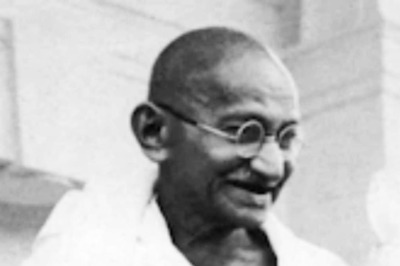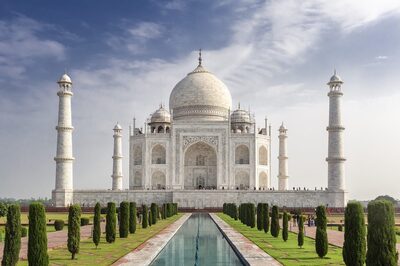
views
Maha Shivaratri meaning the Great Night of Shiva falls in the luni-solar month of the Hindu calendar.
According to Shiva Purana, once Brahma and Vishnu had an argument over supremacy. To test them, Lord Shiva pierced the three worlds as a huge endless pillar of light, the jyotirlinga. Vishnu and Brahma were asked to find the end of the light. They split their way to downwards and upwards to find the end of the light. When the both failed, Brahma lied that he found the end but Vishnu conceded his defeat. Lord Shiva appeared as a second pillar of light and cursed Brahma that he would have no place in religious ceremonies. While, Vishnu will be worshipped till eternity. The jyotirlinga is the supreme partless reality, out of which Shiva partly appears. Thus jyotirlinga shrines are places where Shiva appeared as a fiery column of light.
Here are the 12 jyotirlinga shrines:
1. Somnath:
The first among twelve Jyotirlingam shrines, Somnath is located in Prabhas Kshetra in Saurashtra. Believed to be the protector of moon God,the Somnath temple popularly was destroyed and rebuilt six times. Also known as 'the Shrine eternal', the present temple was reconstructed in Chalukya style of Hindu temple architecture.
2. Mahakaleshwar:
Situated in Ujjain, Madhya Pradesh, Mahakaleshwar's unique feature is the idol of Lord Shiva known as 'dakshinamurti' which means facing south. People believe that offering prayer at Mahakaleshwar will make your wishes come true. On Maha Shivaratri a huge fair is held near the temple and prayers are offered at the temple the whole night.
3. Omkareshwar:
Another revered Jyotirlingam Shrine of Shiva, Omkareshwar is in the Khandwa district of Madhya Pradesh. The foundation of this Jyotirlinga is on an island called Mandhata or Shivapuri in the Narmada river. The shape of the island is said to be like the Hindu symbol 'Om'. The island also houses another temple apart from Omkareshwar, the Amareshwar temple.
4. Kedarnath:
Located atop the Himalayan range, the Kedarnath temple is open for public during April. The temple is closed and no one stays in Kedarnath during winters due to heavy snowfall. For six months the idol is transferred to a place near Guptakashi called Ukhimath.
5. Bhimashankar:
Located 50 km northwest of Khed, near Pune, Bhimashankar Temple is a composite of old and the new structures in the Nagara style of architecture. Bhimashankar is also the source of Bhima river, which flows southeast and merges with the Krishna river near Raichur.
6. Kashi Vishwanath Temple:
Kashi Vishwanath Temple is located on the western bank on Ganges in Varanasi. Devotees who visit Kashi Vishwanath temple scatter ashes of the deceased ancestors in the Ganges. Kashi Naresh or the king of Kashi is only allowed to access the Sanctum Sanctorum during religious occasions like Shivaratri.
7. Trimbakeshwar:
The Trambakeshwar temple is situated 28 km away from Nasik. The temple is located at the source of the river Godavari river.
8. Ramanathaswamy:
Located on the island of Rameshwaram, the Ramanathaswamy temple was built during 12th century by Pandya dynasty. Both the Shaivites and Vaishnavites communities consider this as a holy place.
9. Grishneshwar:
Situated 11 km away from Daulatabad, Grishneshwar is a divine paradise for the Shiva devotees.
10. Vaidyanath:
Vaidyanath temple also known as Baba dham and Baidyanath dham is one of the most sacred Shiva abodes. Although the location of Vaidyanath Jyotirlinga is disputed.
11. Nageshvara:
Another Jyotirlingam of Shiva. According to Shiva Purana, Nageshvara Jyotirlinga is in 'the Darukavana' but the actual location of the legendary forest of Darukavana is debated.
12. Mallikarjuna Swamy:
Situated at Srisailam in Andhra Pradesh, Sri Mallikarjuna Swamy is one of the 275 Paadal Petra Sthalams.
Follow @News18Movies for more




















Comments
0 comment